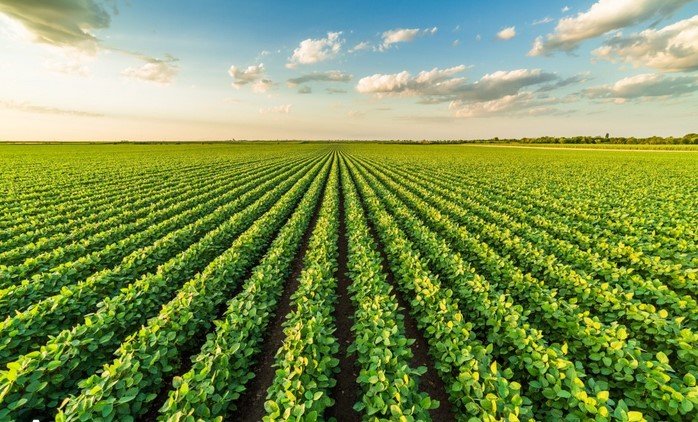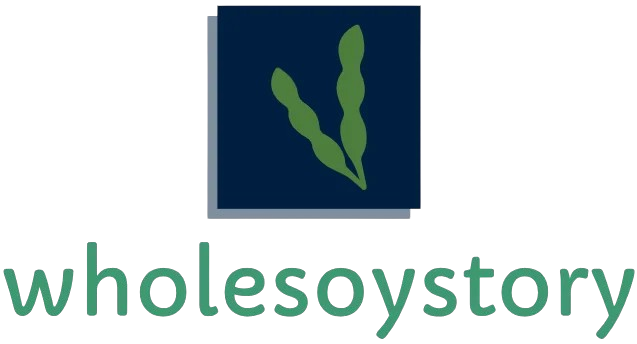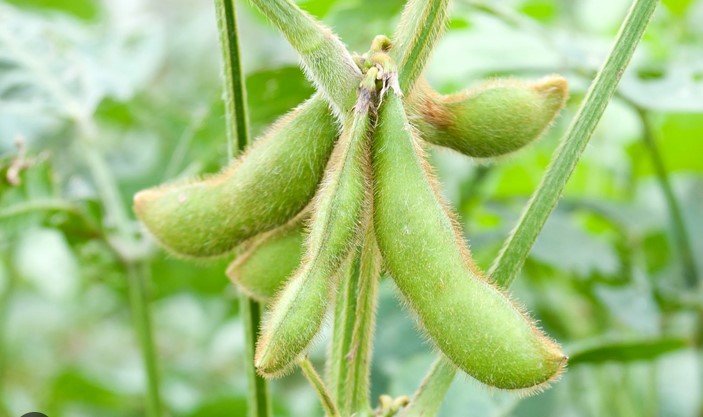Soy cultivation offers numerous environmental benefits, making it a sustainable choice for global food production. As the demand for plant-based diets increases, soy stands out as an environmentally friendly crop. From carbon sequestration to efficient land use, soy farming has the potential to significantly reduce our environmental footprint. In this article, we’ll explore the environmental advantages of growing soy and why it plays an essential role in promoting sustainability.

Carbon Sequestration
One of the most significant environmental benefits of growing soy is its ability to sequester carbon. Plants naturally absorb carbon dioxide from the atmosphere during photosynthesis, and soybeans are no exception. By absorbing CO2, soy crops help reduce the amount of greenhouse gases in the atmosphere, contributing to the mitigation of climate change.
Soy farming, especially when done through sustainable practices such as crop rotation and no-till farming, can increase the carbon storage in soil. This helps lock carbon in the ground, further reducing its impact on the climate. The ability of soy to store carbon makes it a valuable crop in efforts to combat global warming.
Reduced Land Use Compared to Animal Agriculture
Growing soy for human consumption requires less land compared to raising livestock. Producing plant-based foods like soy uses significantly fewer resources than raising animals for meat and dairy. Livestock farming requires vast amounts of land to grow feed crops, graze animals, and manage waste. In contrast, soy is a high-yielding crop that requires less land to produce the same amount of protein.
By shifting toward a plant-based diet, the demand for soy and other crops increases, leading to more efficient land use. As a result, we can reduce deforestation and habitat destruction, preserving ecosystems and biodiversity. Growing soy for direct human consumption helps prevent the overuse of land and promotes more sustainable agricultural practices.
Lower Water Usage
Compared to animal agriculture, soy cultivation requires significantly less water. Producing plant-based protein from soy uses much less water than raising cattle, which needs large amounts of water for drinking and growing feed. On average, it takes about 1,800 gallons of water to produce a pound of beef, whereas producing a pound of soy requires only about 216 gallons.
By choosing soy over animal-based protein sources, we can help conserve freshwater resources. This is particularly important in regions that face water scarcity. Soy farming, when managed sustainably, can significantly reduce water consumption, contributing to more efficient water use globally.
Reduced Greenhouse Gas Emissions
Soy farming also has a lower environmental impact when it comes to greenhouse gas emissions compared to animal agriculture. Livestock farming is a major source of methane, a potent greenhouse gas that contributes to global warming. On the other hand, soy cultivation generates far fewer emissions. In fact, growing soy for food produces only a fraction of the greenhouse gases associated with meat production.
Soy farming, particularly when practiced using sustainable farming methods, helps decrease emissions and supports cleaner air. As demand for plant-based foods increases, soy becomes an essential crop in the fight against climate change, offering an eco-friendly alternative to meat and dairy production.
Promotes Biodiversity
When practiced using sustainable farming techniques, soy cultivation can promote biodiversity. Crop rotation, for instance, helps maintain healthy soil and reduces the risk of pest infestations. Rotating soy with other crops can improve soil health, reduce the need for synthetic fertilizers, and minimize soil erosion.
Additionally, soy farming can provide habitats for wildlife if done in conjunction with eco-friendly agricultural practices. By maintaining natural vegetation and avoiding excessive pesticide use, soy farmers can create a more balanced ecosystem that supports a variety of species.
Conclusion
Growing soy offers numerous environmental benefits, from carbon sequestration to reducing water usage and greenhouse gas emissions. Soy is a sustainable crop that requires less land and fewer resources compared to animal agriculture, making it an ideal choice for addressing global food production challenges. By increasing the cultivation of soy for human consumption, we can help preserve natural ecosystems, reduce environmental degradation, and combat climate change. As demand for plant-based diets continues to grow, soy will play an even more important role in creating a sustainable future.











